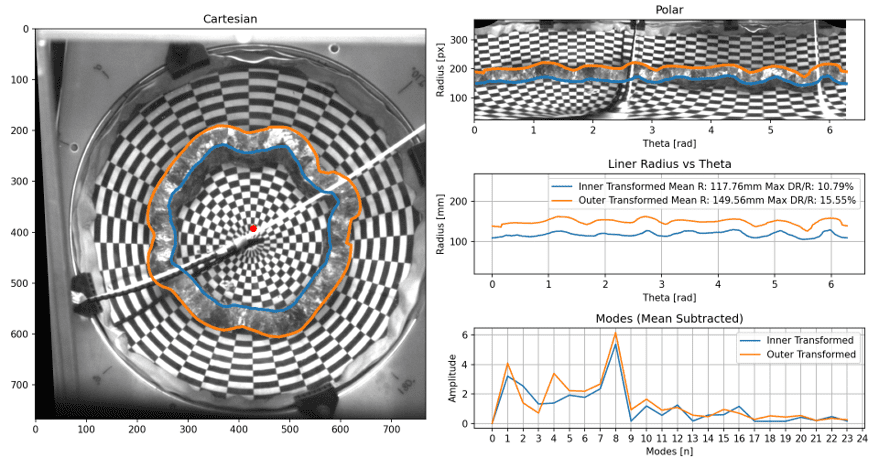Abstract
Magnetized target fusion (MTF) relies on rapidly compressing magnetized plasma within a flux conserver to attain fusion conditions. Maintaining the smoothness and symmetry of the plasma-facing surface during compression is crucial, as any asymmetric deformation or buckling of the solid metal shell can disrupt magnetic confinement, reducing plasma temperature, and lifetime.
To establish the criteria for preventing buckling in solid ring implosions, we assess the effectiveness of the dynamic plastic flow buckling model. This assessment involves analyzing buckling phenomena in magnetically driven, imploding lithium rings. This investigation includes a total of 5 experiments with variations in collapse velocities, radius-to-thickness ratios, and initial ring temperatures. We capture and analyze the collapse trajectories and deformations of the rings during implosion using computer vision techniques. To establish material properties required for the theory, we utilize the Johnson-Cook model for the lithium ring with strain and strain rate extracted from the experiments. Using the extracted material properties and ring dimensions and employing the analytical model, we predict critical buckling velocities and dominant modes for each experimental scenario.
We observe qualitative agreement between the experiment and analytical model within measurement uncertainty, indicating the potential to define design, manufacturing, and quality requirements for larger-scale Magnetized Target Fusion experiments using solid shells to achieve fusion conditions.
Fatemeh Edalatfar, Lemuel Santos, Hashem Jayhooni, Jean-Sebastien Dick. Accepted submission to the ASME 2024 Pressure Vessels & Piping Conference.

